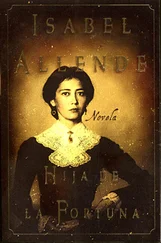Where on earth does she get it from? Blake Jackson had wondered when Amanda—aged six—first beat him at chess. It could hardly be from Indiana, who floated in the stratosphere preaching love and peace half a century after the hippies had died out, and it wasn’t from Bob Martín, who had never finished a book in his life. “I wouldn’t worry too much about it,” said Celeste Roko, who had a habit of showing up unannounced, and who terrified Blake Jackson almost as much as the devil himself. “Lots of kids are precocious at that age, but it doesn’t last. Just wait till her hormones kick in, and she’ll nosedive to the usual level of teenage stupidity.”
But in this case the psychic had been wrong: Amanda’s intelligence had continued to develop throughout her teenage years, and the only impact her hormones had was on her appearance. At puberty she grew quickly, and at fifteen she got contact lenses to replace her glasses, had her retainer removed, learned to tame her shock of curly hair, and emerged as a slim young woman with delicate features, her father’s dark hair, and her mother’s pale skin, a young woman who had no idea how beautiful she was. At seventeen she still shambled along, still bit her nails, and still dressed in bizarre castoffs she bought in thrift stores and accessorized according to her mood.
When her grandfather left, Amanda felt, for a few hours at least, that she was master of her own space. Three months from now she’d graduate from high school—where she’d been happy, on the whole, despite the frustration of having to share a dorm room—and soon she’d be heading for Massachusetts, to MIT, where her virtual boyfriend, Bradley, was already enrolled. He’d told her all about the MIT Media Lab, a haven of imagination and creativity, everything she had ever dreamed of. Bradley was the perfect man: he was a bit of a geek, like her, had a quirky sense of humor and a great body. His broad shoulders and healthy tan, he owed to being on the swim team; his fluorescent yellow hair to the strange cocktail of chemicals in swimming pools. He could easily pass for Australian. Sometime in the distant future Amanda planned to marry Bradley, though she hadn’t told him this yet. In the meantime, they hooked up online to play Go, talked about hermetic subjects and about books.
Bradley was a science-fiction fan—something Amanda found depressing; more often than not science fiction involved a universe where the earth had been reduced to rubble and machines controlled the population. She’d read a lot of science fiction between the ages of eight and eleven before moving on to fantasy—imaginary eras with little technology where the difference between heroes and villains was clear—a genre Bradley considered puerile and pernicious. He preferred bleak dystopias. Amanda didn’t dare tell him that she’d read all four Twilight novels and the Millennium trilogy; Bradley had no time for vampires and psychopaths.
Their romantic e-mails full of virtual kisses were also heavily laced with irony so as not to seem soppy; certainly nothing explicit. The Reverend Mother had expelled a classmate of Amanda’s the previous December for uploading a video of herself naked, spread-eagled, and masturbating. Bradley had not been particularly shocked by the story, since some of his buddies’ girlfriends had made similar sex tapes. Amanda had been a little surprised to discover that her friend was completely shaven, and that she’d made no attempt to hide her face, but she was more shocked by the hysterical reaction of the nuns, who had the reputation of being tolerant.
While she messaged Bradley online, Amanda filed away the information her grandfather had managed to dig up on the Case of the Misplaced Baseball Bat, along with a number of grisly press cuttings she’d been collecting since her godmother first broadcast her grim prophecy. The kids who played Ripper were still trying to come up with answers to several questions about Ed Staton, but already Amanda was preparing a new dossier for their next case: the murders of Doris and Michael Constante.
Matheus Pereira, a painter of Brazilian origin, was another of Indiana Jackson’s admirers. But their love was strictly platonic, since Matheus devoted all his energies to his painting. Matheus believed that artistic creativity was fueled by sexual energy, and when forced to choose between painting and seducing Indiana—who didn’t seem interested in an affair—he chose the former. In any case, marijuana kept him in a permanent state of zoned-out bliss that didn’t lend itself to amorous schemes. Matheus and Indiana were close friends; they saw each other most days, and they looked out for each other. He was constantly harassed by the police, while she sometimes had problems with clients who got too fresh, and with Deputy Chief Martín, who felt he still had the right to interfere in his ex-wife’s affairs.
“I’m worried about Amanda,” Indiana said as she massaged Matheus with eucalyptus oil to relieve his sciatica. “Her new obsession is crime.”
“So she’s over the whole vampire thing?”
“That was last year. But this is more serious—she’s fixated on real-life crimes.”
“She’s her father’s daughter.”
“I never know what she’s up to. That’s the problem with the Internet—some pervert could be grooming my daughter right now, and I’d be the last to know.”
“It’s not like that, Indi. They’re just a bunch of kids playing games. By the way, I saw Amanda in Café Rossini last Saturday, having breakfast with your ex-husband. I swear that guy’s got it in for me, Indi.”
“No, he hasn’t. Bob’s pulled strings to keep you out of jail more than once.”
“Only because you asked him. Anyway, like I was saying, Amanda and I chatted for a bit, and she told me about their role-playing game, Ripper. Did you know that in one of the murders, the killer shoved a bat—”
“Yes, Matheus, I do know,” Indiana interrupted. “But that’s just what I mean—do you really think it’s healthy for Amanda to be obsessed with gruesome things like that? Most girls her age have crushes on movie stars.”
Matheus Pereira lived in an unauthorized extension on the flat roof of the Holistic Clinic, and in practice he also acted as the building supervisor. This ramshackle shed that he called his studio got exceptionally good light for painting and for growing marijuana—which was purely for his personal use and that of his friends.
In the late 1990s, after passing through various hands, the building had been sold to a Chinese businessman with a good eye for an investment, who had the idea of turning it into one of the health and wellness centers flourishing all over California. He had the exterior painted and hung up a sign that read HOLISTIC CLINIC to distinguish it from the fishmongers in Chinatown. The people to whom he rented the units on the second and third floors, all practitioners of the healing arts and sciences, did the rest of the work. A yoga studio and an art gallery occupied the two ground-floor units. The former also offered popular tantric dance classes, while the latter—inexplicably called the Hairy Caterpillar—mounted exhibitions of work by local artists. On Friday and Saturday nights, musicians and arty types thronged the gallery, sipping complimentary acrid wine from paper cups. Anyone looking for illicit drugs could buy them at the Hairy Caterpillar at bargain prices right under the noses of the police, who tolerated low-level trafficking as long as it was done discreetly. The two top floors of the Holistic Clinic were subdivided into small consulting suites that comprised a waiting room barely big enough for a school desk and a couple of chairs, and a treatment room. Access to the treatment rooms was somewhat restricted by the fact there was no elevator in the building—a major drawback to some patients, but one that had the advantage of discouraging the seriously ill, who were unlikely to get much benefit from alternative medicine.
Читать дальше











